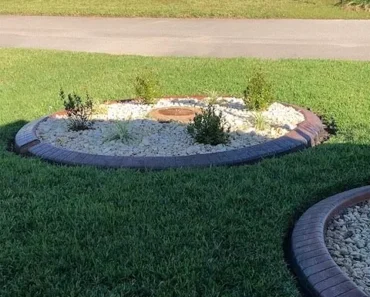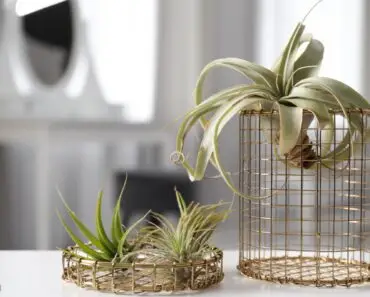The term “wildflower” conjures images of untamed landscapes, awash with color and teeming with life. In the context of home gardening, wildflowers represent an opportunity to bring a slice of this natural beauty into our own backyards. The allure of wildflowers lies not only in their aesthetic appeal but also in their ability to thrive with minimal intervention, making them a sustainable choice for gardeners of all levels.
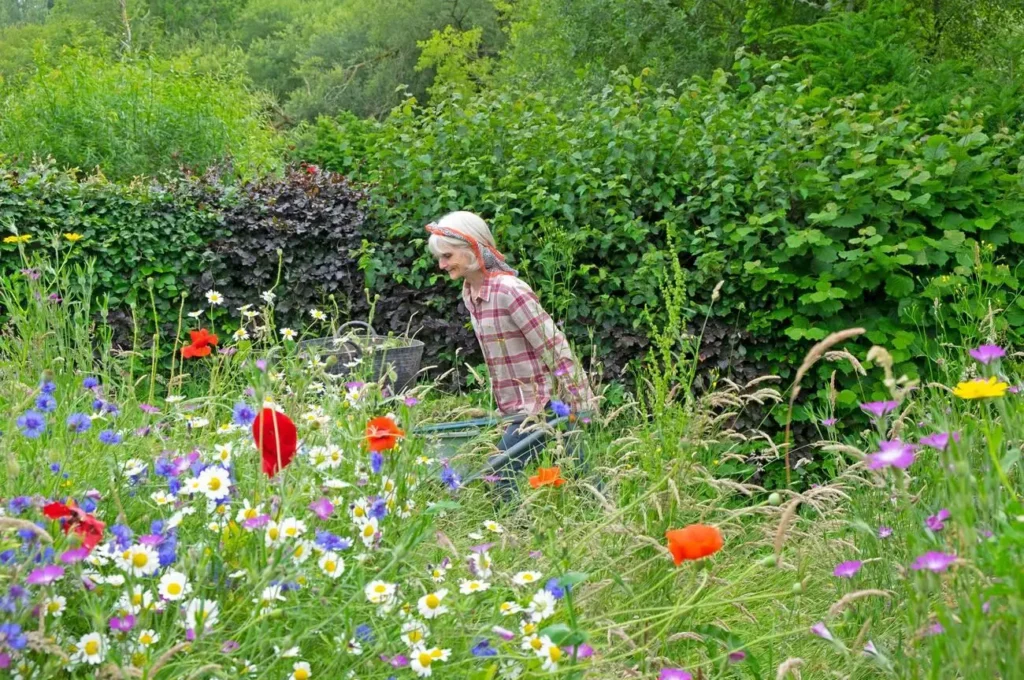
Can You Just Sprinkle Wildflower Seeds?
Ah, the simplicity of just sprinkling wildflowers seeds and watching them grow! While somewhat romanticized, this method is not far from the truth. However, success depends on a few key factors: choosing the right time of year, preparing the soil minimally, and selecting species that are suited to your local climate. Let’s explore how to maximize your success with minimal effort.
Top 12 Wildflowers for Your Garden
1. Black-eyed Susan (Rudbeckia hirta)
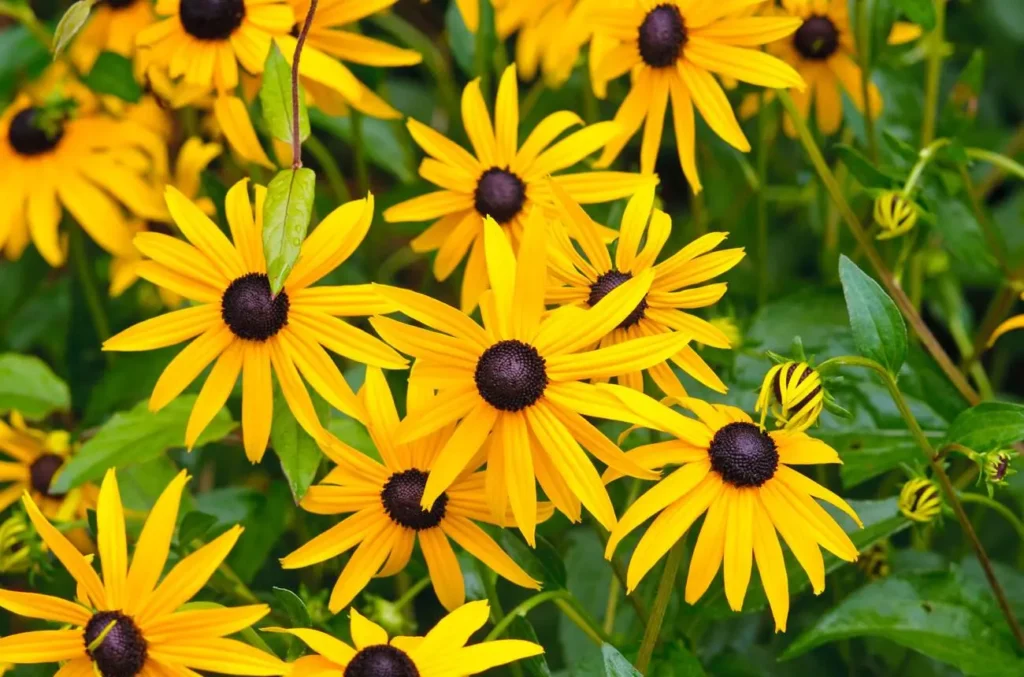
The Black-eyed Susan, or Rudbeckia hirta, stands as a shining example of the beauty and resilience that wildflowers bring to any garden. Known for its radiant yellow petals and dark, prominent center, this flower is more than just a pretty face. It embodies the spirit of wildflower gardening by offering a blend of aesthetic appeal and ecological benefits that can transform gardens into havens for wildlife while delighting the senses.
2. Purple Coneflower (Echinacea purpurea)

The Purple Coneflower, or Echinacea purpurea, is a key wildflower in gardening, known for its beauty and medicinal benefits. Native to North America, it’s beloved by gardeners for symbolizing health and natural beauty. Its distinct purple petals and cone-shaped center make it a garden highlight.
3. California Poppy (Eschscholzia californica)

The California Poppy, or Eschscholzia californica, mirrors the sun’s golden tones, adding warmth to gardens. It’s California’s state flower, known for its bright, cup-shaped blooms in orange, gold, and sometimes red, pink, and white. Adaptable and resilient, it showcases the beauty of native plants, enhancing any outdoor area.
4. Lupine (Lupinus spp.)
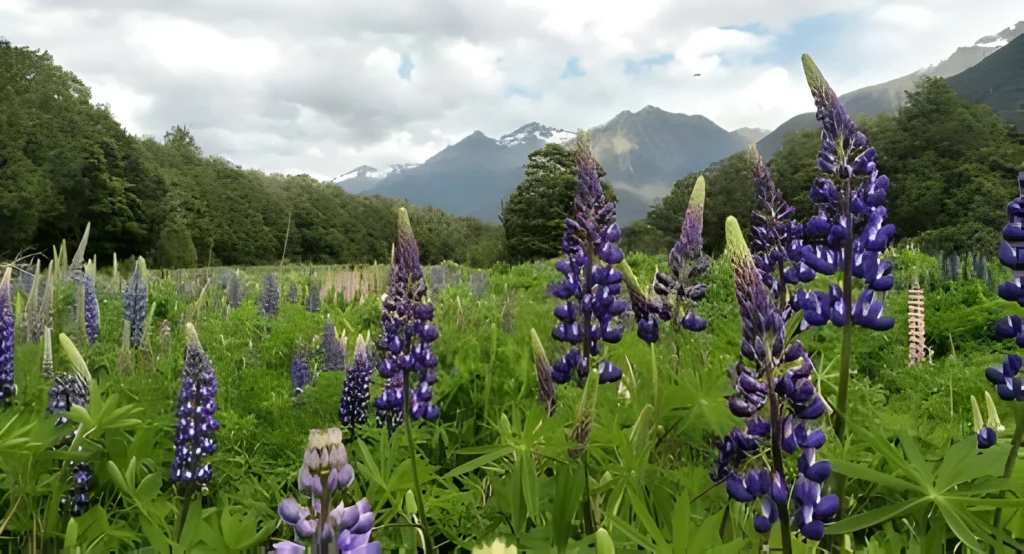
Lupines, from the Lupinus genus, are nature’s color skyscrapers, towering with vivid blooms. These perennials and annuals add structure to gardens with their tall, colorful flower clusters in blues, purples, pinks, whites, and yellows. Thriving in diverse settings, lupines turn gardens into spectacles of vertical color and drama.
5. Foxglove (Digitalis purpurea)
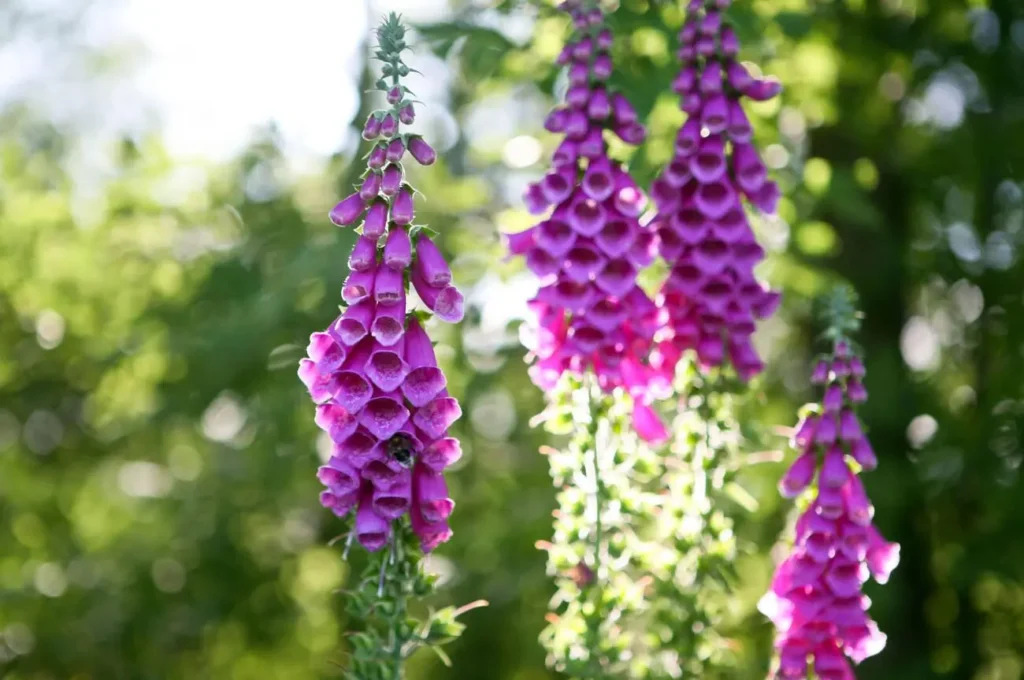
Foxglove, or Digitalis purpurea, brings majesty and mystery to gardens with its tall, bell-shaped flowers. Native to Europe, western Asia, and northwestern Africa, this biennial plant is loved globally for its striking look and dramatic vertical presence. The speckled throats of the flowers beckon to pollinators while casting an air of enchantment over the garden.
6. Wild Blue Phlox (Phlox divaricata)

Wild Blue Phlox, known scientifically as Phlox divaricata, paints the spring garden with swathes of soft blue, creating an effect akin to a living carpet underfoot. This native perennial is cherished for its ability to spread gently, forming lush patches of color that seem to capture the essence of spring. With its delicate, fragrant flowers and shade-tolerant nature, Wild Blue Phlox is a must-have for gardeners looking to add a serene and enchanting touch to their landscape.
7. Sunflower (Helianthus annuus)
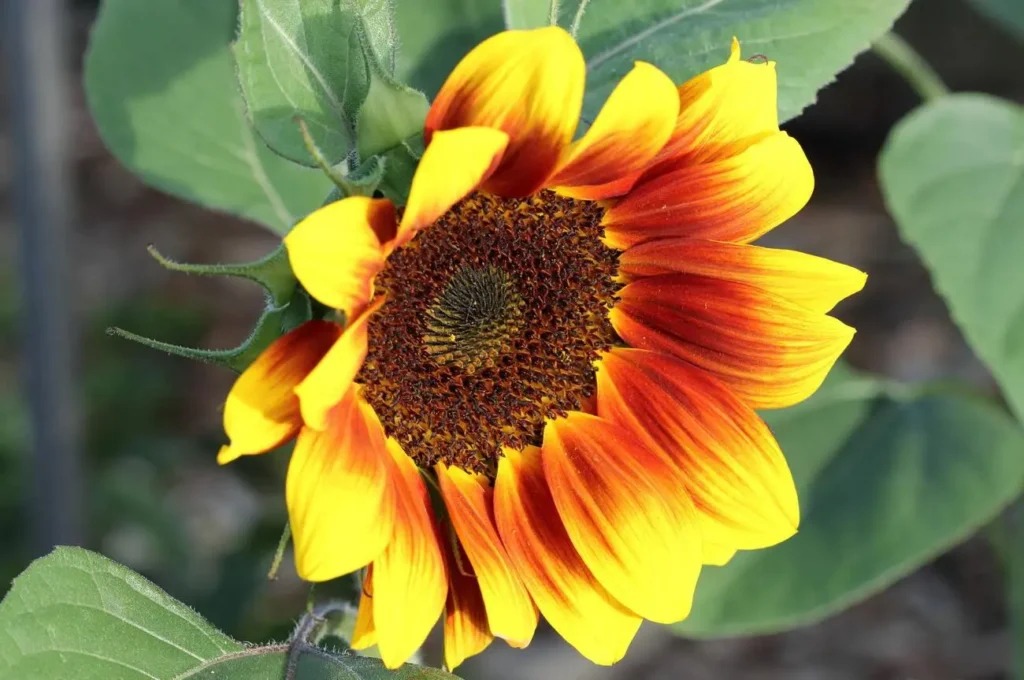
The Sunflower, or Helianthus annuus, is truly one of the garden’s most magnificent giants, standing tall with its face turned towards the sun, embodying warmth, energy, and vibrancy. This annual plant, native to North America, has captivated cultures around the world for centuries, not only for its towering beauty but also for its utility, providing seeds for food, oil, and bird feed. With varieties ranging in height from a few feet to towering specimens over 10 feet tall, sunflowers can dominate a garden landscape, offering a striking visual spectacle.
8. Columbine (Aquilegia spp.)

Columbine, belonging to the genus Aquilegia, enchants the garden with its delicate, nodding flowers and whimsical, spurred petals. This perennial plant, with species found across the Northern Hemisphere, brings a touch of fairy-tale grace to any setting. Columbine’s variety offers colors from soft pastels to vibrant hues, making it a versatile choice for gardeners wanting to add depth and texture to their floral displays.
9. Butterfly Weed (Asclepias tuberosa)
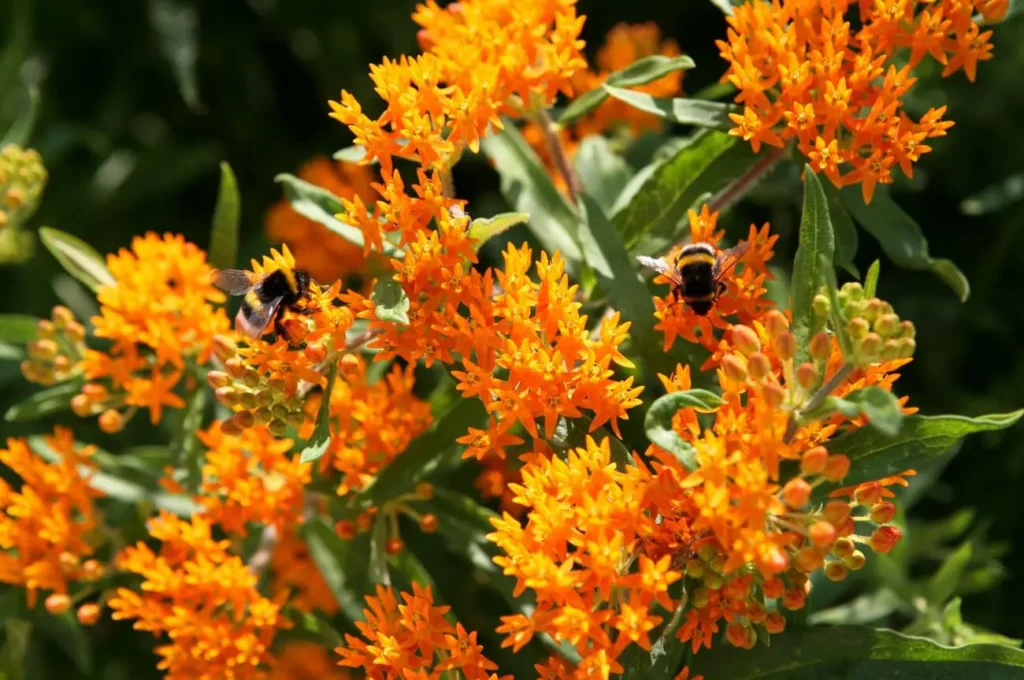
Butterfly Weed, Asclepias tuberosa, stands out in the garden not just for its vibrant orange blooms but also for its role as a beacon for butterflies, particularly the monarchs. This perennial plant, a member of the milkweed family, is native to the eastern and southern United States and is celebrated for its ability to attract a plethora of pollinators. Its clusters of bright orange (sometimes yellow or red) flowers add a burst of color to the landscape, making it a favorite among gardeners looking to create lively, butterfly-friendly gardens.
10. Aster (Aster spp.)
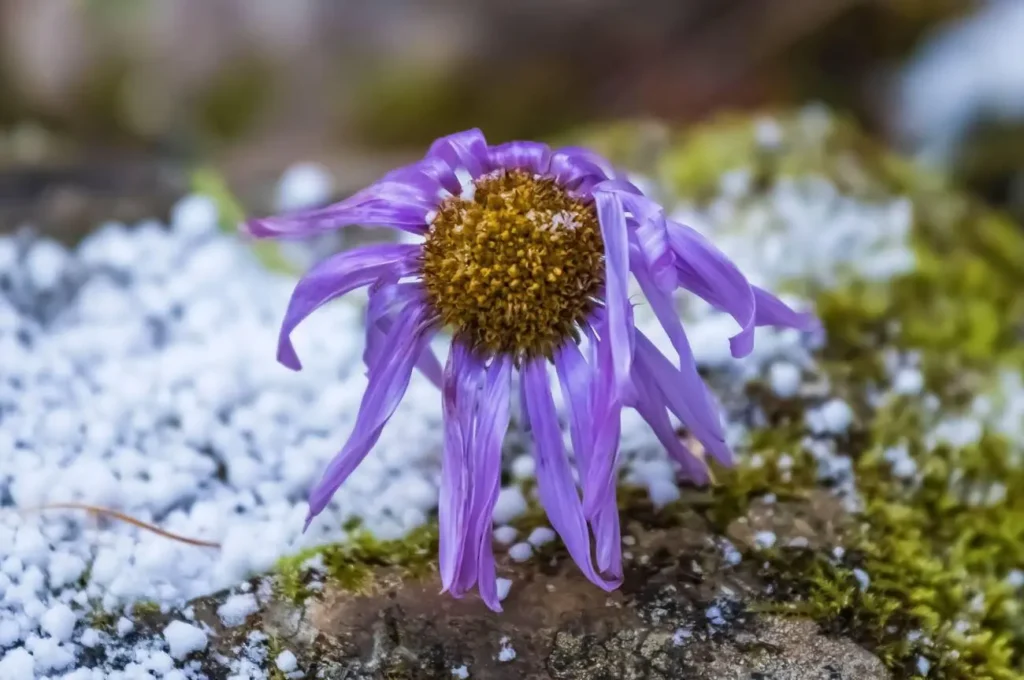
Asters, from the genus Aster, signal autumn with their color burst as other flowers wane. These perennials, with daisy-like blooms in blues, purples, pinks, and whites, brighten gardens from late summer to fall. Native across the Northern Hemisphere, they’re adaptable to many garden types, essential for autumn displays.
11. Red Poppy (Papaver rhoeas)

The Red Poppy, Papaver rhoeas, is a symbol of remembrance and beauty that transcends its simple appearance.
the red poppy, with its bright red petals and black center, symbolizes remembrance and peace. Native to Europe, Asia, and North Africa, it thrives in fields and along roadsides, adding vibrant color. Its growth in disturbed soils made it a symbol for fallen soldiers, particularly from World War I.
12. Indian Blanket (Gaillardia pulchella)
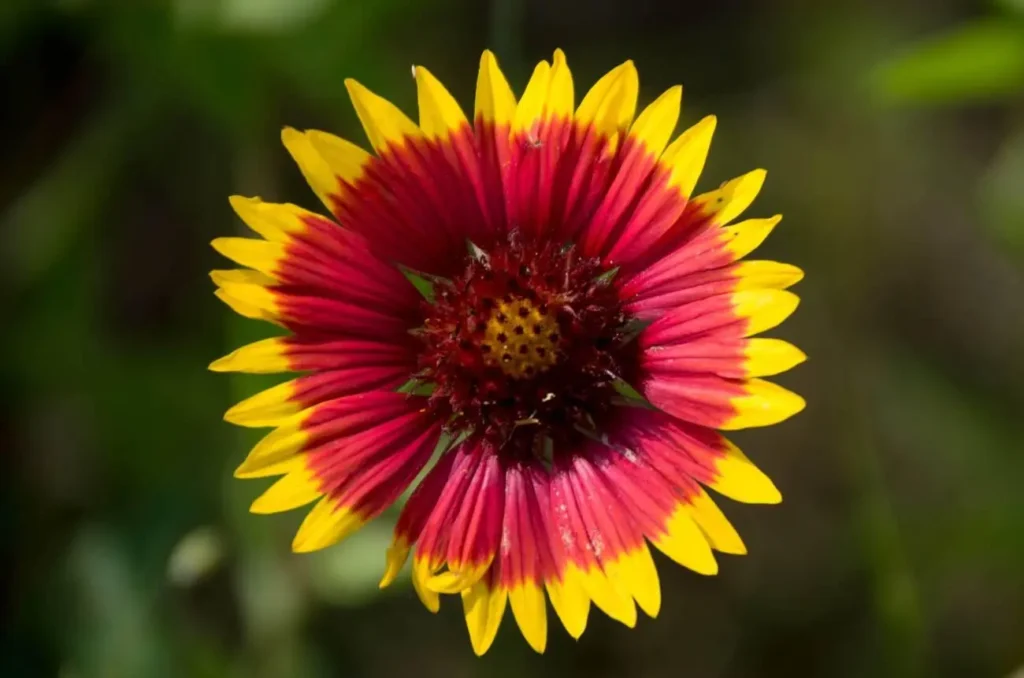
The Indian Blanket, or Gaillardia pulchella, also called Firewheel, is a colorful wildflower with red, orange, and yellow blooms. Native to the central U.S., it symbolizes rugged beauty and resilience. Its fiery, daisy-like flowers light up gardens from early summer to fall, attracting gardeners and pollinators with their warm display.


